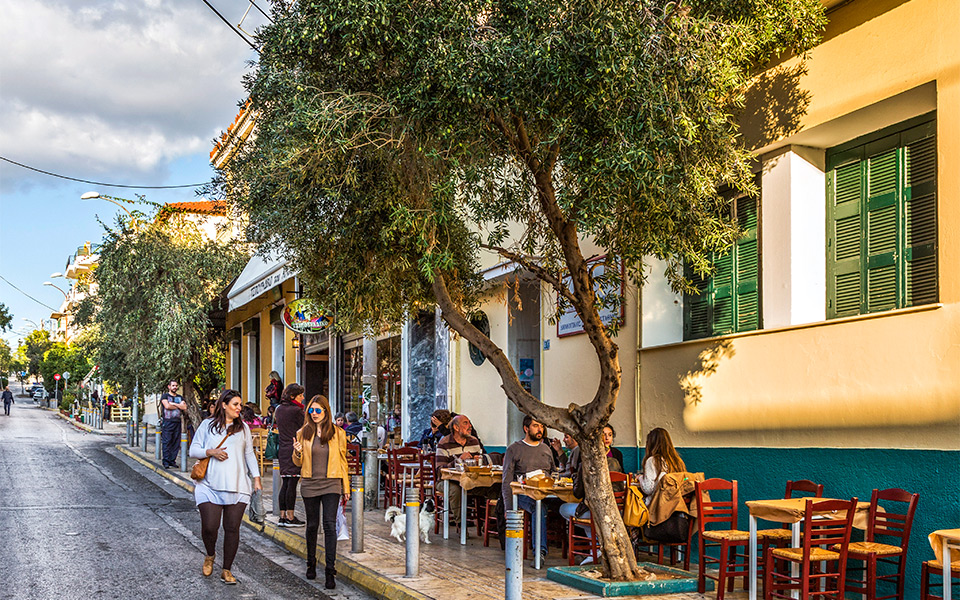Once called Katsikadika due to its population of goat herders known for their generosity in gifting milk to their fellow residents, the area assumed its current name after the banning of goats from the city in 1925. Its present name derives from Petrina Alonia, which pays homage to its pre-urban use as an area for threshing grain. While the goat herders may have gone, the spirit of community and simplicity remains, with a concomitant style of the unadorned.
Petralona is slightly disorganized and, like many parts of Athens, has its fair share of potholes and graffiti, and a random architectural mix which can give an impression of neglect and chaos. However, interspersed among all of this (and perhaps appearing all the more unusual because of their surroundings) are establishments audaciously defying their scruffy setting.
Taking advantage of the lower rents, young creative Athenians have banded together to open alternative businesses such as social-conscious cafés like Xatripy, a for-the-people-by-the-people place that mixes coffee and cakes with music gigs and literary societies, to old-style tsipouradika (spots mainly serving tsipouro spirit accompanied by small dishes) with a modern twist. Tipped to be the up-and-coming alternative to Gazi, this new posse of places to be is clearly popular with locals of all kinds and who, even on a languid Sunday, are more than happy to engage in a little banter with friends and strangers alike. The goat herders would most likely be proud.
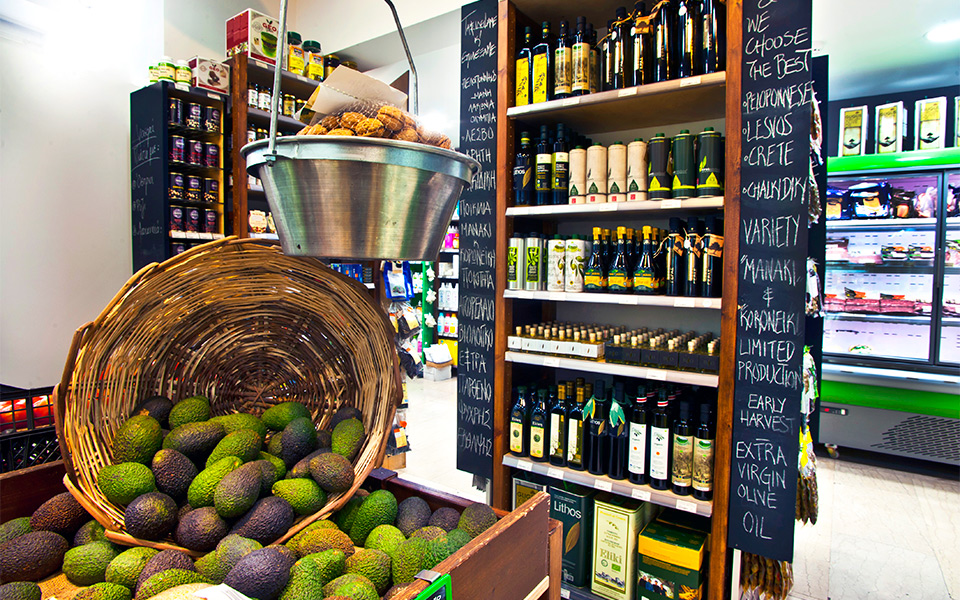
© Clairy Moustafellou
As a neighborhood, Petralona is in fact divided into two separate areas; Ano Petralona, running from the metro tracks to Filopappou Hill, and Kato Petralona, ranging from the tracks to the main thoroughfare of Pireos. Arriving at Petralona metro station, one very quickly feels as if it is a separate town altogether.
Tall, overhanging trees flank the metro line and on the Kato Petralona side 4 Epoches, a local grocery store greets commuters and travelers with a colorful and rich array of fruits and vegetables. Running alongside the metro tracks, a bike lane and running path leads through the heart of this neighborhood, offering snatched views of Mt Parnitha in between the lines of apartment blocks atop ground-floor hardware stores and liquor shops.
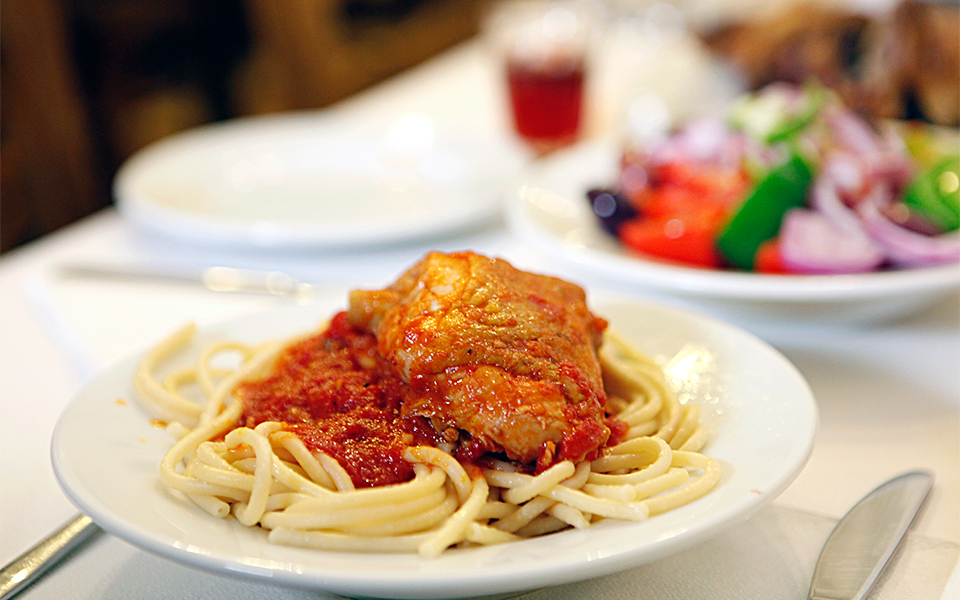
© Katerina Kampiti
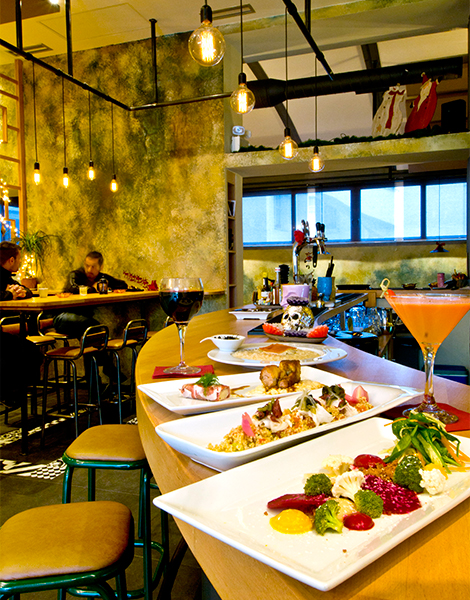
© Clairy Moustafellou
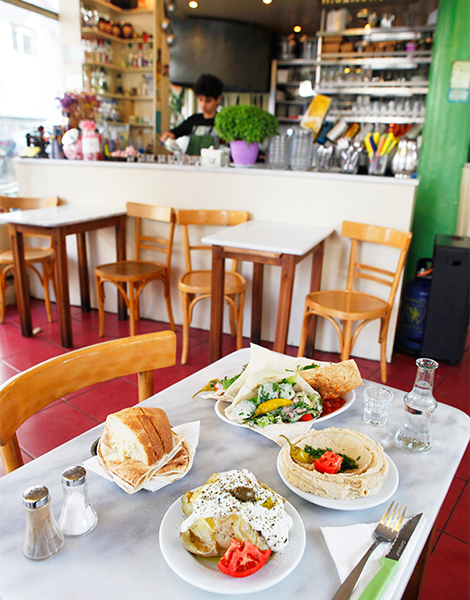
© Katerina Kampiti
As you stroll through the side streets of Kato Petralona, you’ll notice flyers for the latest music gig or amateur theatre production plastered on the walls and lamp posts, adding artistic strokes to its traditionally working-class character, although it still is home to several industrial complexes including the Pavlidis chocolate factory (now owned by Kraft). Yet its new emerging identity has an atmosphere conducive to artists, musicians and enterprising young business people intent on not letting the current crisis impact their creativity.
Worthy of joining the class of hidden gems that people so rapaciously seek out is Upupa Epops. Its style is at once confusing, yet harmonious. Renaissance-style mirrors and lanterns adorn the walls while crimson sofas sit on black-and-white checkered flooring. Yet the ingenuity comes with the added mix of hibiscus flowers, paintings of tropical birds and terracotta walls redolent of Casablanca. Whatever the contradiction, it obviously works. Whether you come for one of their exquisite pizzas at lunch or an evening whiskey-based cocktail, it’s very often a case of table sharing, a testament to its popularity.
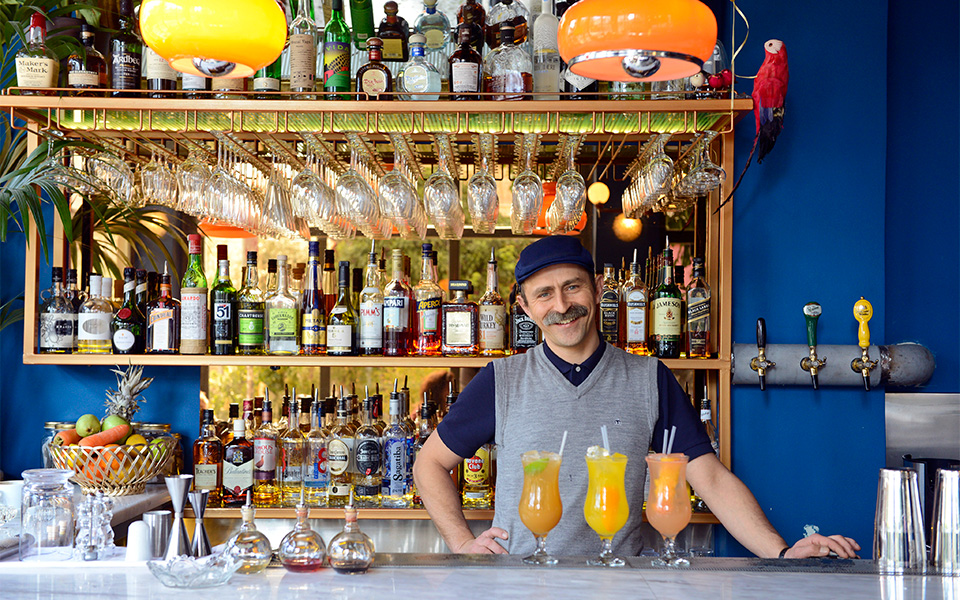
© Angelos Giotopoulos
As an entity, Petralona is really a myriad of contradictions. If Kato Petralona has a feeling of urban-jungle-softened-by-joviality, Ano Petralona is, by comparison, more genteel and evocative of a bygone era. Troon Street, for example, is a picture of perfectly paved roads, old-style houses in pastel colors, with plenty of olive and lemon trees to complete this island-like painting.
It has traditional establishments serving hearty, homestyle traditional Greek dishes in rustic settings such as Taverna tou Oikonomou and Kappari. Yet Ano Petralona has noticeably begun its foray into international cuisine too, with tastings from France under the banner of Chez Lucien and Blue Bamboo, Petralona’s first Thai restaurant, which has gone from strength to strength since it opened its doors. Adding Lebanese to the mix (yet in a determinedly Greek style) is Rantevou, serving meze dishes inspired by both Mediterranean and Middle Eastern recipes alongside local craft beers.
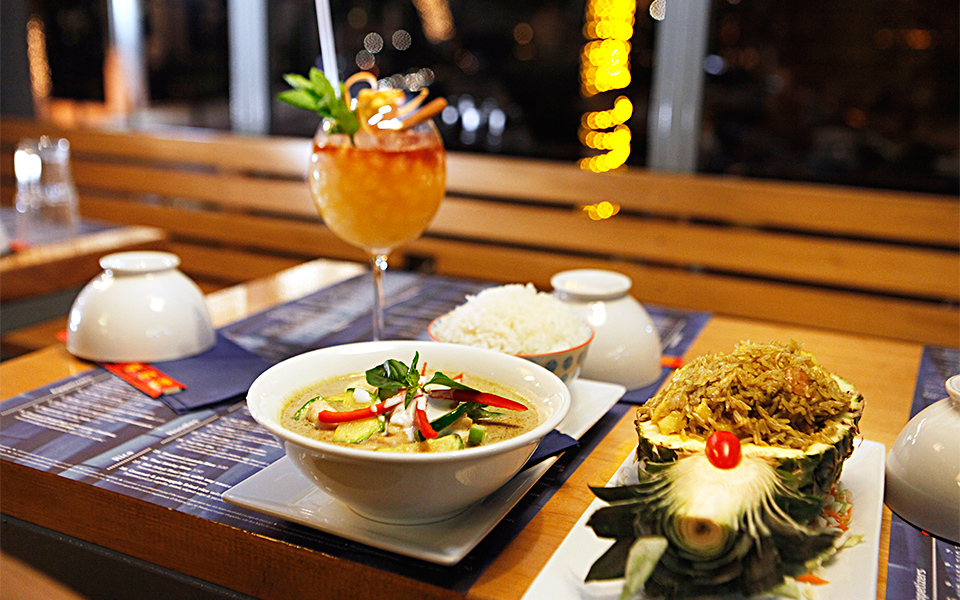
© Katerina Kampiti
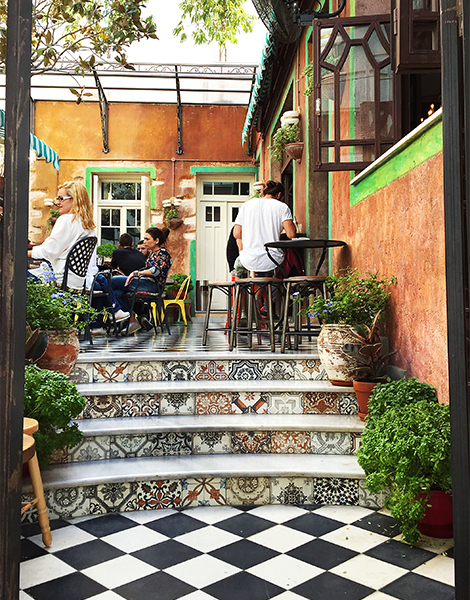
© Irini Michopoulou
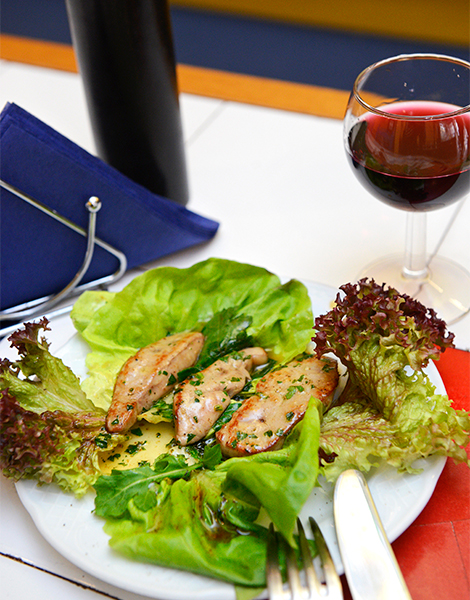
© Angelos Giotopoulos
Ano Petralona, with its stone-built houses and abundance of oleander and jasmine, has managed to retain its old Athens aesthetics despite the rest of the city having succumbed to the march of concrete architecture. Notably, picturesque Mercouri Square, and the streets of Troon, Kydantidon and Kallisthenous all effuse a spacious elegance far removed from the industrial tones of Kato Petralona. Although it isn’t all old-school charm in Ano Petralona either.
Klouvi bar is case in point, with its decor of birdcages and exotic plants, a busy schedule of stand-up comedy acts, various music gigs and a list of eccentric cocktails to match. While To Theio Tragi, a self-styled ‘punk bistro’, specializes in molecular cuisine at what can only be described as miniscule prices, given the gourmet nature of its menu.
Regardless of Petralona’s bipolar elements and while it is perhaps still in its infancy, it remains a key example of an emerging pack of Athenian neighborhoods offering style and quality. Yet one suspects that despite the hype, these newcomers will always retain a certain amount of chaotic charm. We certainly hope so.

